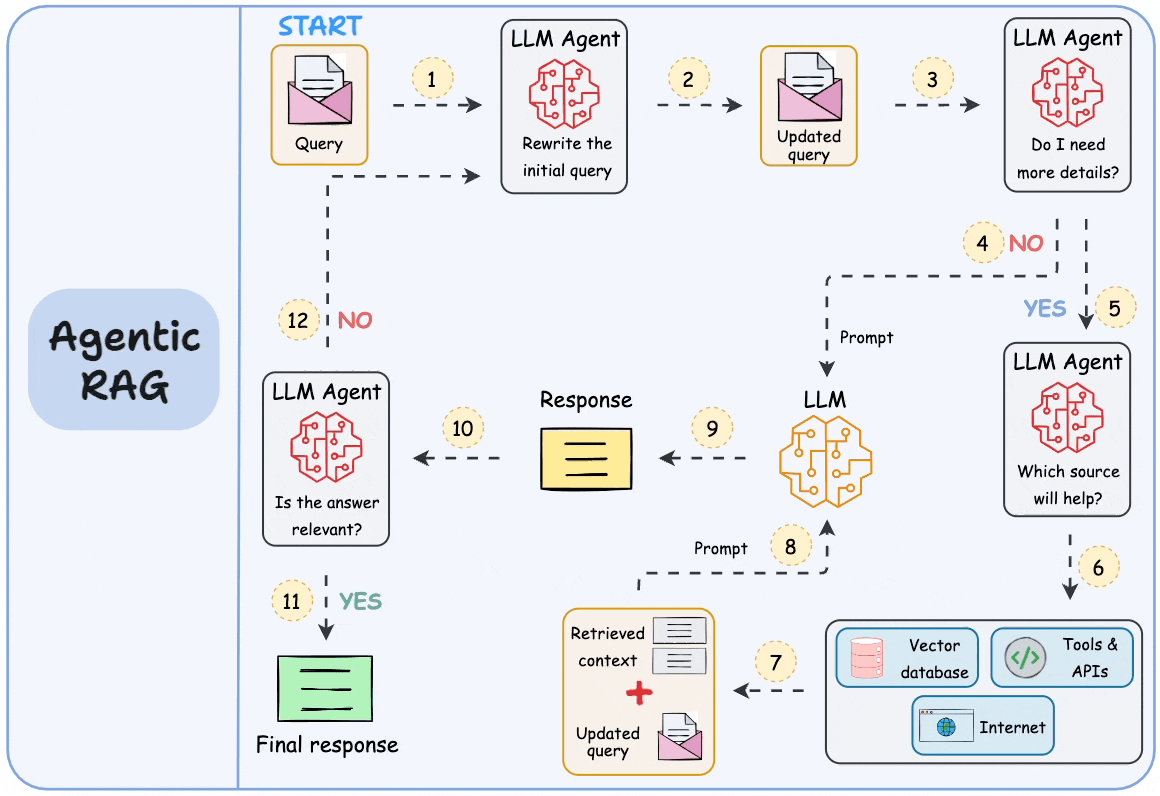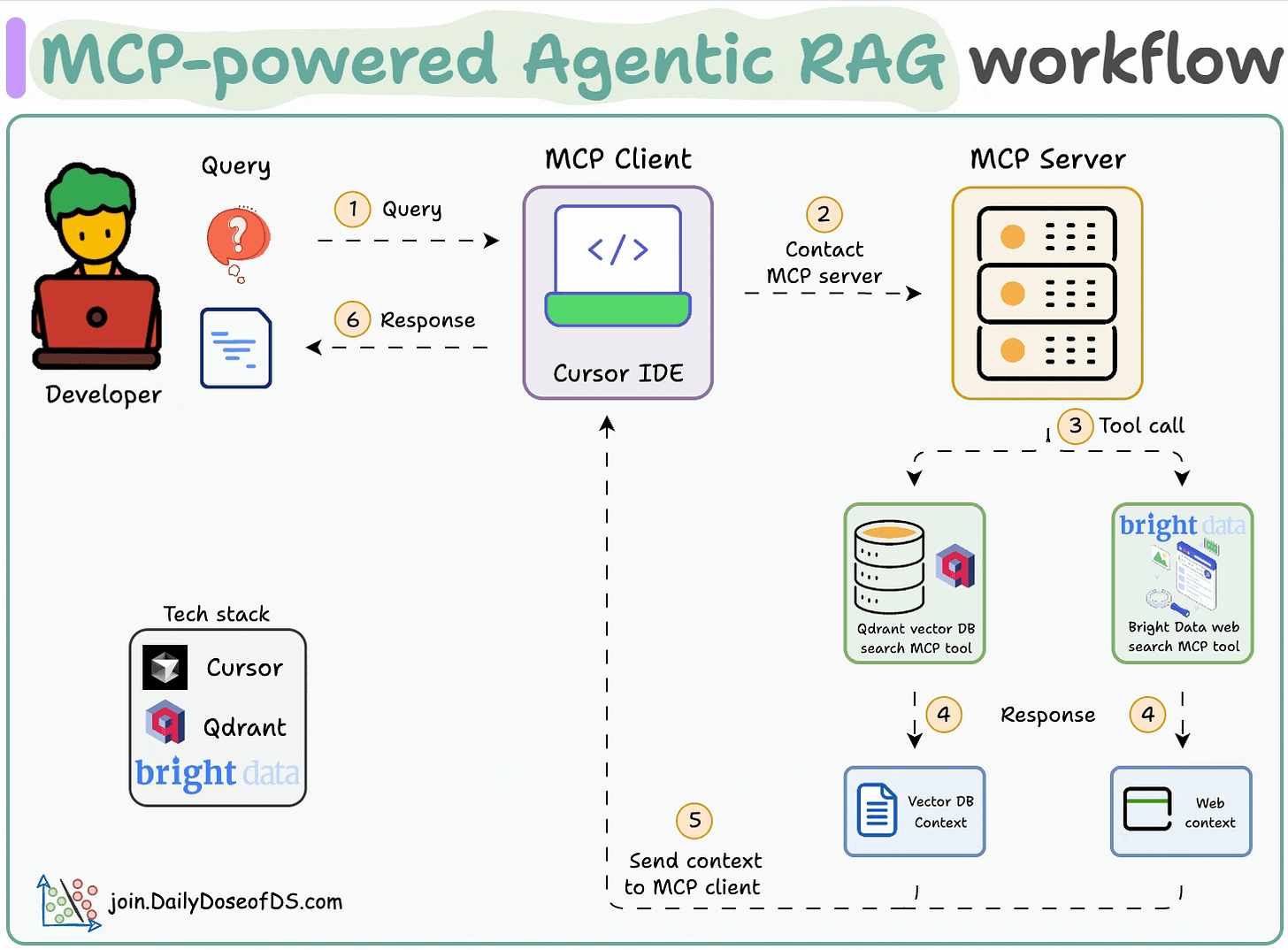What Happens When You Stop Comparing MCP and RAG and Start Combining Them?
Retrieval Augmented Generation (RAG) systems are becoming increasingly sophisticated in today’s fast-evolving AI landscape. As these systems scale across multiple data sources and use cases, Agentic architectures powered by intelligent decision-making components are quickly becoming the norm, not the exception.
But with complexity comes the need for better orchestration, control, and modularity.
That’s where MCP (Model Context Protocol) architecture steps in.
🔍 What Is an Agentic RAG System?
Most modern RAG systems deployed in production already exhibit agentic characteristics. This means:
- They don’t just retrieve and generate blindly
- They analyze, decide, and adapt based on context and evolving information needs
For example, if your RAG system connects to multiple data sources, it likely already incorporates agency at the retrieval decision-making layer deciding which source(s) to query for which type of user request.

How MCP Enhances the Agentic Workflow
1️⃣ Intelligent Query Analysis
The user’s original query is first passed to an LLM-based Agent, which:
- Rewrites the query if needed, potentially generating multiple query variants for better coverage
- Determines whether additional data sources are necessary to provide a meaningful response
2️⃣ Triggering Contextual Retrieval
If additional context is needed, the Agent activates the Retrieval step, pulling data from sources like:
- Real time user data
- Internal documents that a user might be interested in
- External websites and APIs
- Data is available on the web
This Is Where MCP Makes the Difference
MCP acts as a middleware architecture that standardizes how data is accessed, secured, and integrated into the Agentic pipeline:
✔️ Modular Data Domains
Each domain runs its own MCP Server, exposing clearly defined rules on how its data can be accessed and used.
✔️ Security & Compliance Built-In
Access controls and usage policies can be enforced per server, ensuring data sovereignty and organizational compliance.
✔️ Plug-and-Play Scalability
New data sources can be added to the MCP network without rewriting agent logic, allowing the system to evolve independently in terms of:
- Procedural memory (how tasks are done)
- Episodic memory (context from previous interactions)
- Semantic memory (core knowledge and facts)
✔️ Standardized Data Exposure
Platform owners can publish data through MCP in a consistent format, making it easy for external consumers (other agents, systems, or web apps) to access and utilize data on the web.
✔️ Agent Focus Unlocked
AI Engineers no longer need to hardcode access to each data source. They can focus on designing the topology and reasoning logic of the Agent itself.
3️⃣ Generating a Response
If no retrieval is needed, the LLM generates a response directly based on internal context and memory.
4️⃣ Evaluation and Iteration
Once an answer is generated, the Agent evaluates it for:
- Accuracy
- Completeness
- Relevance
If it’s not good enough, the Agent can rewrite the query and loop the process until a satisfactory outcome is reached.

💡 Why It Matters
By decoupling data orchestration from reasoning logic, MCP enables truly scalable, maintainable, and intelligent RAG systems. It empowers platforms to expose their data securely while allowing AI engineers to innovate on agent capabilities, without rearchitecting every time the data landscape changes.
In short, MCP is the glue that holds together the modular intelligence stack of modern Agentic RAG systems.
